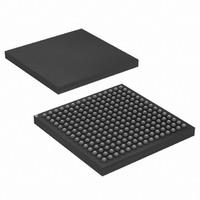AT91CAP7E-NA-ZJ Atmel, AT91CAP7E-NA-ZJ Datasheet - Page 57

AT91CAP7E-NA-ZJ
Manufacturer Part Number
AT91CAP7E-NA-ZJ
Description
MCU CAP7 FPGA 225LFBGA
Manufacturer
Atmel
Series
CAP™r
Specifications of AT91CAP7E-NA-ZJ
Core Processor
ARM7
Core Size
16/32-Bit
Speed
80MHz
Connectivity
EBI/EMI, FPGA, IrDA, SPI, UART/USART, USB
Peripherals
DMA, POR, PWM, WDT
Number Of I /o
32
Program Memory Size
256KB (256K x 8)
Program Memory Type
ROM
Ram Size
160K x 8
Voltage - Supply (vcc/vdd)
1.08 V ~ 1.32 V
Data Converters
A/D 8x10b
Oscillator Type
Internal
Operating Temperature
-40°C ~ 85°C
Package / Case
225-LFBGA
Processor Series
AT91Mx
Core
ARM7TDMI
Data Bus Width
32 bit
3rd Party Development Tools
JTRACE-ARM-2M, MDK-ARM, RL-ARM, ULINK2
Lead Free Status / RoHS Status
Lead free / RoHS Compliant
Eeprom Size
-
Lead Free Status / Rohs Status
Details
Available stocks
Company
Part Number
Manufacturer
Quantity
Price
- Current page: 57 of 520
- Download datasheet (11Mb)
12.2.4.1
12.2.4.2
12.2.4.3
8549A–CAP–10/08
Modes and Exception Handling
Status Registers
Exception Types
Registers R0 to R7 are unbanked registers. This means that each of them refers to the same 32-
bit physical register in all processor modes. They are general-purpose registers, with no special
uses managed by the architecture, and can be used wherever an instruction allows a general-
purpose register to be specified.
Registers R8 to R14 are banked registers. This means that each of them depends on the current
mode of the processor.
All exceptions have banked registers for R14 and R13.
After an exception, R14 holds the return address for exception processing. This address is used
to return after the exception is processed, as well as to address the instruction that caused the
exception.
R13 is banked across exception modes to provide each exception handler with a private stack
pointer.
The fast interrupt mode also banks registers 8 to 12 so that interrupt processing can begin with-
out having to save these registers.
A seventh processing mode, System Mode, does not have any banked registers. It uses the
User Mode registers. System Mode runs tasks that require a privileged processor mode and
allows them to invoke all classes of exceptions.
Exception vectors are located starting at address 0x0000 0000.
All other processor states are held in status registers. The current operating processor status is
in the Current Program Status Register (CPSR). The CPSR holds:
All five exception modes also have a Saved Program Status Register (SPSR) that holds the
CPSR of the task immediately preceding the exception.
The ARM7TDMI
The types of exceptions are:
Exceptions are generated by internal and external sources.
More than one exception can occur in the same time.
When an exception occurs, the banked version of R14 and the SPSR for the exception mode
are used to save state.
• four ALU flags (Negative, Zero, Carry, and Overflow)
• two interrupt disable bits (one for each type of interrupt)
• one bit to indicate ARM or Thumb execution
• five bits to encode the current processor mode
• fast interrupt (FIQ)
• normal interrupt (IRQ)
• memory aborts (used to implement memory protection or virtual memory)
• attempted execution of an undefined instruction
• software interrupts (SWIs)
supports five types of exception and a privileged processing mode for each type.
AT91CAP7E
57
Related parts for AT91CAP7E-NA-ZJ
Image
Part Number
Description
Manufacturer
Datasheet
Request
R

Part Number:
Description:
Customizable Microcontroller
Manufacturer:
ATMEL Corporation
Datasheet:

Part Number:
Description:
DEV KIT FOR AVR/AVR32
Manufacturer:
Atmel
Datasheet:

Part Number:
Description:
INTERVAL AND WIPE/WASH WIPER CONTROL IC WITH DELAY
Manufacturer:
ATMEL Corporation
Datasheet:

Part Number:
Description:
Low-Voltage Voice-Switched IC for Hands-Free Operation
Manufacturer:
ATMEL Corporation
Datasheet:

Part Number:
Description:
MONOLITHIC INTEGRATED FEATUREPHONE CIRCUIT
Manufacturer:
ATMEL Corporation
Datasheet:

Part Number:
Description:
AM-FM Receiver IC U4255BM-M
Manufacturer:
ATMEL Corporation
Datasheet:

Part Number:
Description:
Monolithic Integrated Feature Phone Circuit
Manufacturer:
ATMEL Corporation
Datasheet:

Part Number:
Description:
Multistandard Video-IF and Quasi Parallel Sound Processing
Manufacturer:
ATMEL Corporation
Datasheet:

Part Number:
Description:
High-performance EE PLD
Manufacturer:
ATMEL Corporation
Datasheet:

Part Number:
Description:
8-bit Flash Microcontroller
Manufacturer:
ATMEL Corporation
Datasheet:

Part Number:
Description:
2-Wire Serial EEPROM
Manufacturer:
ATMEL Corporation
Datasheet:











